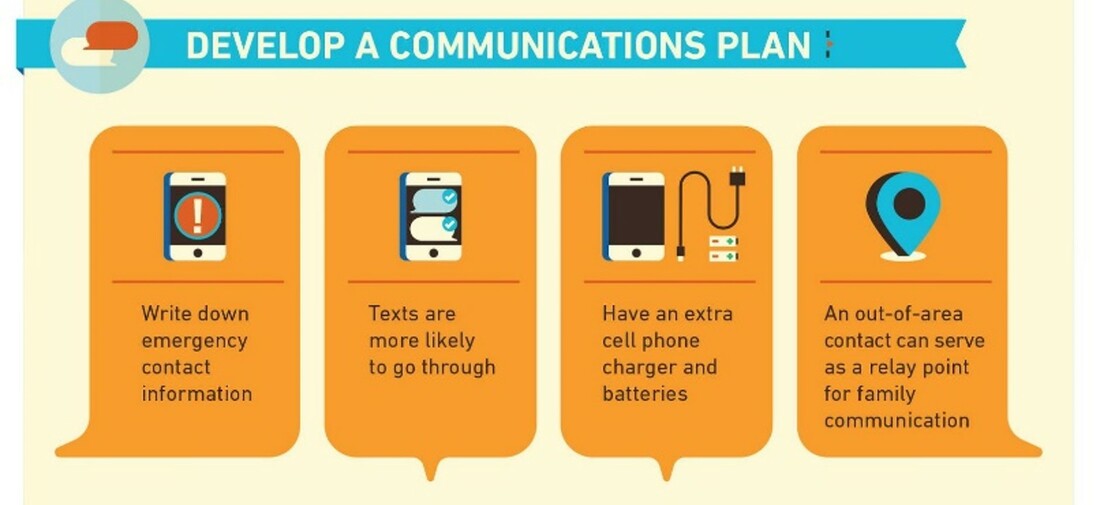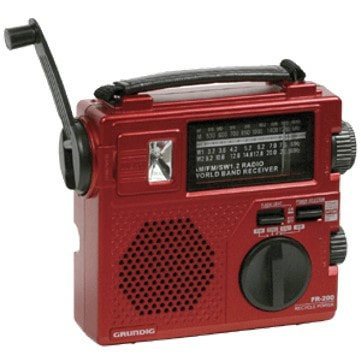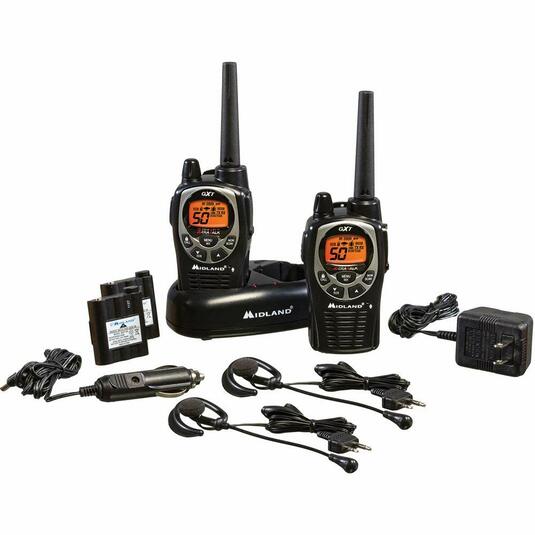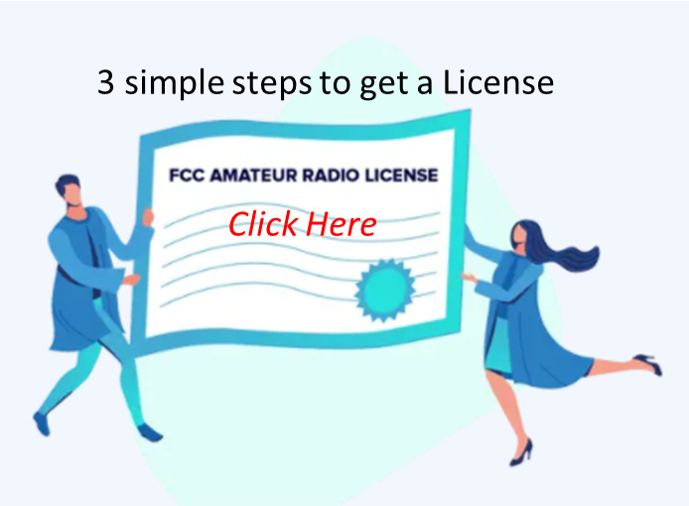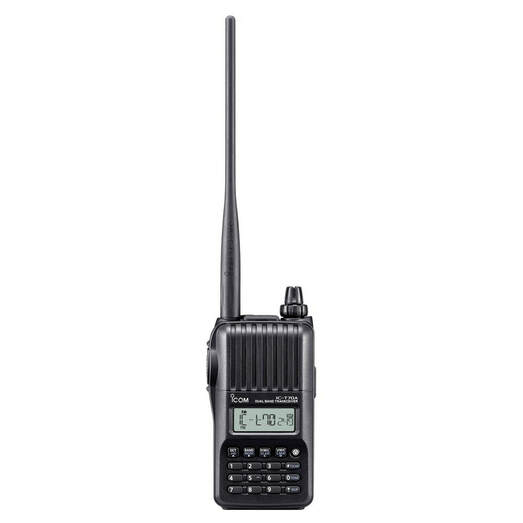Northshore Council PTSA is a welcoming organization that works to support our Local PTAs and serve the children and youth of our community through advocacy, collaboration, education, engagement, leadership, and mentorship.
Communication
Keeping everyone connected when disaster strikes is key. How would you make sure everyone is safe? To avoid trouble with land lines, establish a pre-arranged contact out of state. If someone is trying to call home in the disaster zone, the call may not go through. Use text messages.
AM / FM / NOAA RADIOS
|
Hand crank radios are considered an emergency kit essential by emergency authorities. The best emergency crank radios provide NOAA weather alerts, sustainable power, and light. In an age that we a virtually helpless without cell phones and the internet, these radios can be a beacon of hope when you need it most.
|
FRS/GMRS radios:
|
By: NEMCo October 17, 2018 Newletter.
FRS and GMRS are two overlapping radio services defined by the FCC. FRS (Family Radio Service) is free, and no license is required. It offers a shorter range of operation averages of 0.5 to 1 mile due to low power and antenna restrictions. GMRS (General Mobile Radio Service) covers a much farther range through higher power and the options of external antennas and repeater operation. However, it requires a license. The license is $65 for 10 years with a simple, online application. There is no exam. The license covers your entire “family.” The word family here is defined broadly. For example, it extends to step-grandchildren and in-laws. Both services have access to all 22 channels, but there are differences in permitted transmission power and FM deviation between services. The channels are illustrated in the table above, where FM refers to a deviation of 5kHz and NFM means a deviation 2.5kHz. What FM deviation means to you is, GMRS radios are going to sound about twice as loud and clear as FRS radios operating at the same power level on channels 15-22 and, consequently, GMRS radios will have a better signal-to-noise ratio. There is also a label in the left-most column of the table above that says 15R-22R. This introduces another difference between the FRS and GMRS services. GMRS can operate on repeater receive frequencies, but FRS cannot. |
Repeaters use two frequencies, one on which they listen (receive) and one on which they talk (transmit). FRS can only use the frequency on which the repeaters talk. GMRS can use both and can talk to the repeater on the channel on which the repeater is listening. What this means is that a GMRS operator will hear the FRS operator (without benefit of the repeater) and the FRS operator will hear the GMRS operator through the repeater. Of course, if no repeater is available, the GMRS operator can change channel and now the FRS and GMRS operators can communicate on the channel reserved for repeater transmission. Some places, you will see references to “all 30 channels” and this refers to all of the channels in Figure 2, including the 15R-22R repeater “listening channels”.
There are other regulation differences between FRS and GMRS. FRS radios must use only permanently attached antennas, although there are table-top FRS “base station” radios that have whip antennas. This limitation intentionally restricts the range of communications, allowing greatest use of the available channels by the community. GMRS does not have this restriction and can have detachable antennas that can be placed on a car top or roof.
Buying Guide (Not an official endorsement)!!!!
The choice of a FRS or GMRS radio can be bewildering. Manufacturers do not help the situation. Here are a few tips to help you get started.
Much more on FRS/GMRS to come!!!!
Frequency list:
There are other regulation differences between FRS and GMRS. FRS radios must use only permanently attached antennas, although there are table-top FRS “base station” radios that have whip antennas. This limitation intentionally restricts the range of communications, allowing greatest use of the available channels by the community. GMRS does not have this restriction and can have detachable antennas that can be placed on a car top or roof.
Buying Guide (Not an official endorsement)!!!!
The choice of a FRS or GMRS radio can be bewildering. Manufacturers do not help the situation. Here are a few tips to help you get started.
- Stick with Motorola or Midland – These are reputable manufacturers with extensive selections, and the CERT programs has pretty much standardized on them. If you have another make of radio, be advised that some manufacturers assign different channel numbers to same radio channel. For example, Midland channel 1 is ICOM channel 9.
- Don’t pay much attention to claims about transmission distance (packaging often indicates 30+ mile coverage) – These claims are for perfect conditions, such as over water and from mountain peak to mountain (line-of-sight). We in the Pacific Northwest are rarely so lucky. For the highest power GMRS radio, plan on a range of between ½ mile to 2 miles at best in an urban environment. Remember, transmission power is not as important as using a good location and proper operating technique.
- Plan on paying as much if not more for necessary accessories as for the radio. Most radios come with a charging station, a single rechargeable battery, and an earphone. Here are some other accessories you will want to add. Count on paying about $15-$20 for each one of these.
- An acoustic earphone/microphone – The earpieces that come with the radios are typically not very good. You need a good earphone/microphone to operate hands-free in search and rescue situations.
- Extra rechargeable battery and possibly an additional charger
- An adapter for AA batteries if the radio does not accommodate AA batteries
- A “battery eliminator,” which permits you to run your radio off of a cigarette lighter or automobile battery
- If you have a GMRS radio, you will need an adapter from your radios antenna outlet to the standard OS-239 UHF connector found on most antennas.
Much more on FRS/GMRS to come!!!!
Frequency list:
|
FRS1 462.5625
FRS2 462.5875 FRS3 462.6125 FRS4 462.6375 FRS5 462.6625 FRS6 462.6875 FRS7 462.7125 FRS8 467.5625 |
FRS9 767.5875
FRS10 467.6125 FRS11 467.6375 FRS12 467.6625 FRS13 467.6875 FRS14 467.7125 |
GMRS1 462.55
GMRS2 462.575 GMRS3 462.6 GMRS4 462.625 GMRS5 462.65 GMRS6 462.675 GMRS7 462.7 GMRS8 462.725 |
Amateur / Ham Radio
|
In times of crisis and natural disasters, amateur radiois often used as a means of emergency communication when wireline, cell phones and other conventional means of communications fail. ... It is dispersed throughout a community without "choke points" such as cellular telephone sites that can be overloaded. This method of communication requires a FCC Amateur Radio Licence.
Ham signal range varies widely based on the equipment and band you're using. A handheld unit might only get a few miles in some circumstances, while a base station on HF bands can bounce off the atmosphere to talk around the globe. With a 2 metre mobile radio in your car, you can talk directly to other hams 15 or 20 kilometres away. By operating through a repeater station, that same radio can reliably reach hundreds of kilometres. With an HF (high frequency) radio, you can reach the entire world...if the conditions are favorable Here is a You-Tube that explains the Amateur Radio test - https://youtu.be/bYEzUbb07Mc
American Radio Relay League (ARRL) info: http://www.arrl.org/getting-your-technician-license Classes to get an Amateur Licence: http://www.arrl.org/find-an-amateur-radio-license-class Prepare for Exam: http://www.arrl.org/instruction-exam-practice-and-review There are also ham exam prep apps for both iOS and Android tablets: For iOS: Ham Radio Exam , For Android:Ham Test Prep ARRL Study Guide: https://smile.amazon.com/ARRL-Ham-Radio-License-Manual-ebook/dp/B07DFSW94G/ref=sr_1_2?ie=UTF8&qid=1547437835&sr=8-2&keywords=arrl+technician+class+license+manual HAM CLUB in our Area LWHC: http://www.lakewashingtonhamclub.org/ Here are links to Emergency Communications Teams in our region:
|

